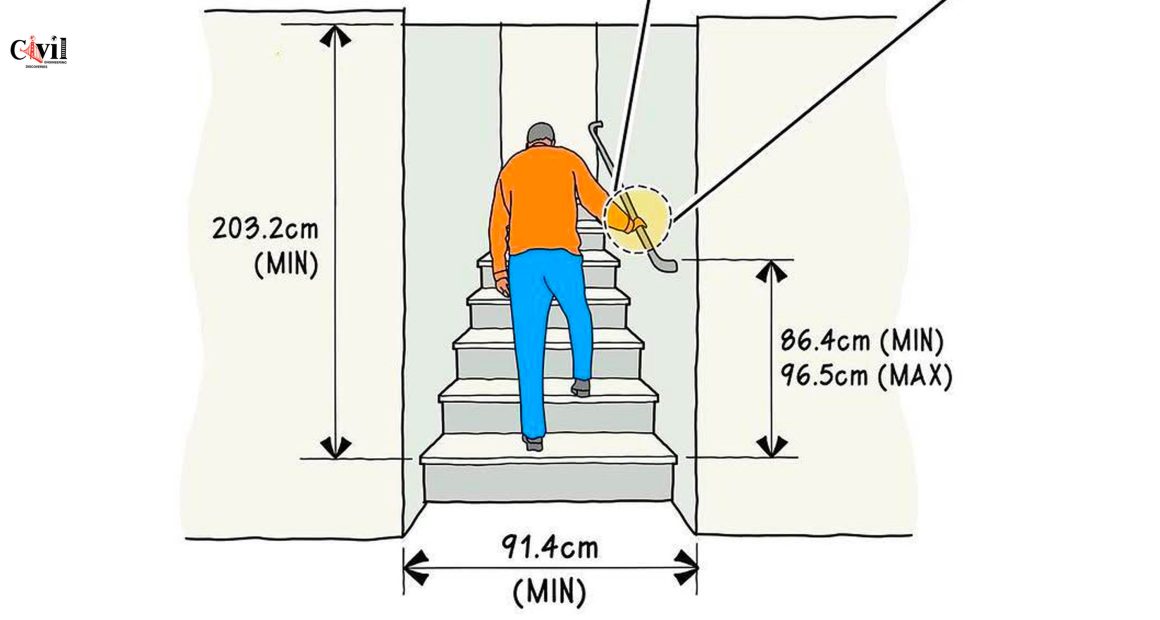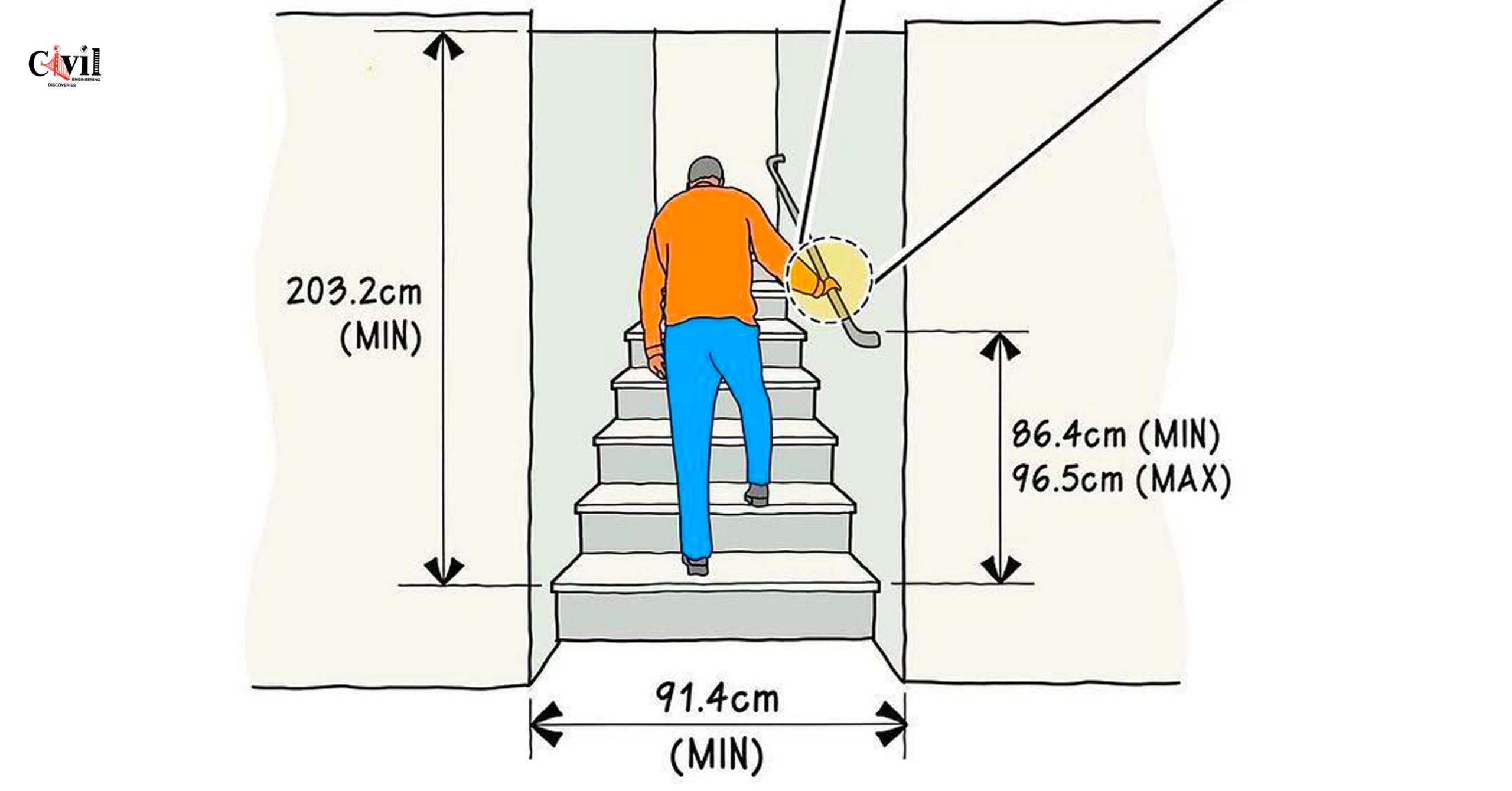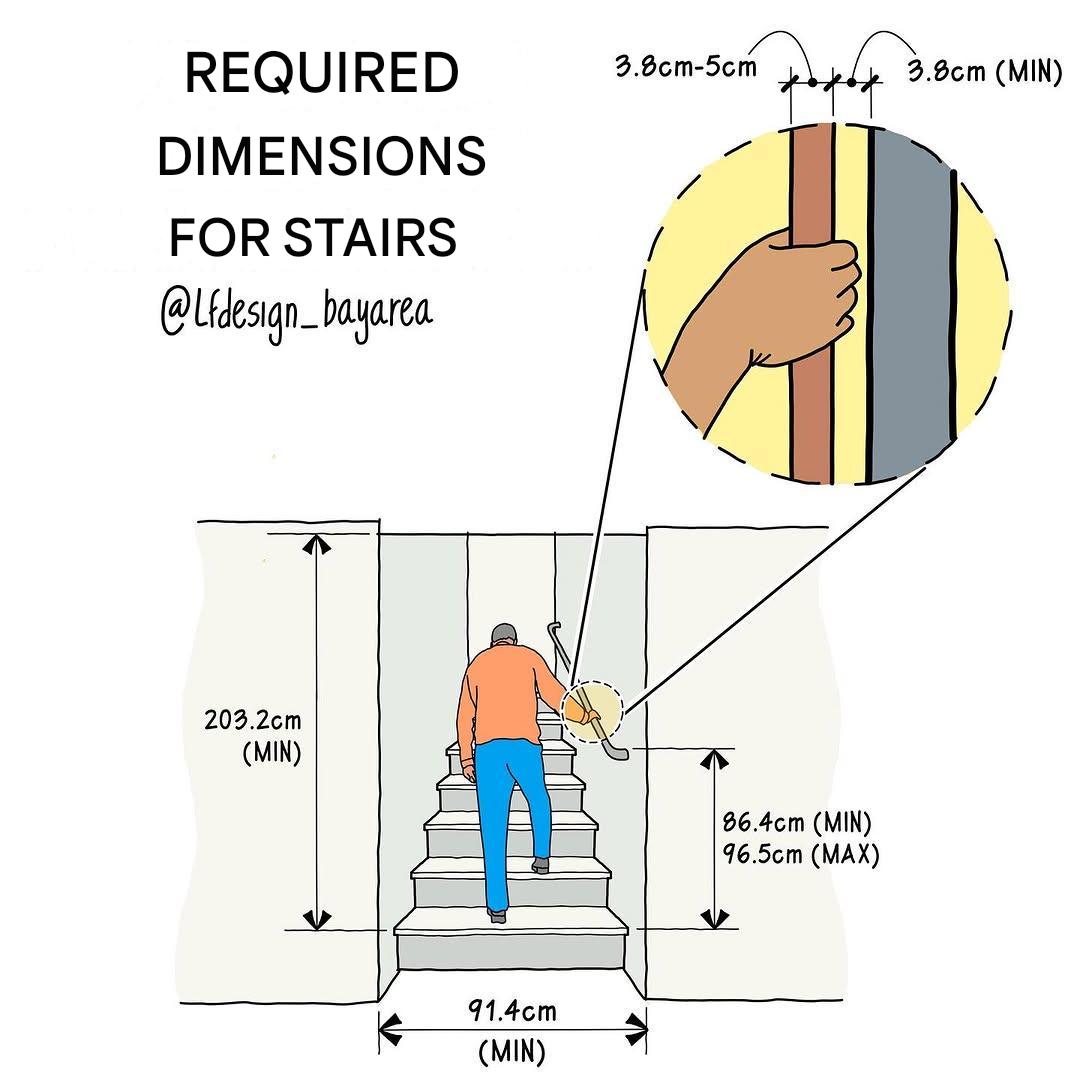Staircases are fundamental to any building’s design, serving both functionality and aesthetic appeal. To ensure safety and usability, adhering to proper dimensions and standards is crucial. Below, we provide a comprehensive guide on the required dimensions for stairs.
Minimum Stair Width: Ensuring Space for Comfort
A staircase must have a minimum width of 91.4 cm (36 inches) to provide adequate walking space. This allows comfortable movement for individuals and even accommodates those carrying objects up or down the stairs.
Headroom Clearance: Avoiding Obstacles
Headroom is critical to prevent accidental bumps while ascending or descending. The minimum vertical clearance for stairs is 203.2 cm (80 inches). This ensures safe navigation, even for taller individuals.
Handrail Heights: Safety and Accessibility
Handrails are essential for support and balance. They should be positioned between 86.4 cm (34 inches) and 96.5 cm (38 inches) above the stair treads. This height range accommodates users of different statures, providing stability and safety.
Handrail Diameter: Easy and Secure Grip
The diameter of the handrail should be between 3.8 cm (1.5 inches) and 5 cm (2 inches) to ensure a comfortable grip. A minimum clearance of 3.8 cm (1.5 inches) between the handrail and the wall is also necessary for accessibility.
Importance of Compliance with Standards
Proper stair dimensions are not just about comfort; they are a safety requirement. Adhering to these standards reduces the risk of accidents, especially for children and the elderly. Additionally, meeting these guidelines ensures compliance with local building codes and regulations.
Final Thoughts: Prioritize Safety in Design
When designing or renovating staircases, always prioritize safety alongside aesthetics. Accurate measurements and adherence to building codes protect users and enhance the staircase’s functionality. Whether in residential or commercial settings, proper stair design is a must for convenience and peace of mind.
Click Here T o See Beam-Column Connections: Giving Stability To The Structural System
Photo Credit: Luis Furushio







